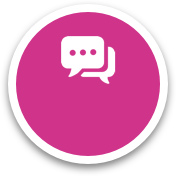BYE BYE, BOTTLES
Weaning your baby from the bottle is a big step for her. It can be exciting, but many parents feel nervous, too. Be patient and make a plan to help your baby succeed.
Weaning happens over time and every baby is different.
Switching from Bottles to Cups
Making the switch from bottles to cups is a major step for you and your baby. It marks the beginning of more independence for both of you.
Not only does it teach your baby an important skill, it also protects her health. Weaning lowers your baby’s risk of ear infections, tooth decay and speech delays. It is another way that you are giving your baby the best possible start.
Start Off Right (Birth to 6 Months)
Setting the stage for successful weaning from the bottle starts well before your baby uses a cup for the first time. Make sure to only use bottles for breastmilk or formula — never juice or other liquids. “At this age, your little one gets everything she needs to grow from breastmilk or formula,” says Akata Sanghani, RD, IBCLC, Texas WIC dietitian and lactation consultant.
Only offer your baby a bottle when she is showing signs of hunger. Find ways to soothe your baby without giving her a bottle. Repeating sounds, playing with soft toys and cuddling can all help your baby feel comforted and safe.
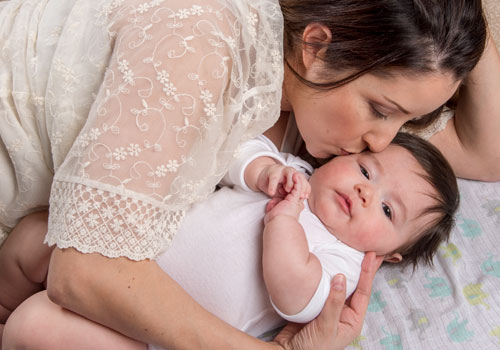
Make Small Changes (6 to 12 Months)
Even before you start giving your baby a cup, you can help her get used to them. Choose cups that are fun, colorful and easy to hold. Let your baby play with them. Pour water with them at bath time, stack them like blocks or bang them together like musical instruments. Making the cup a normal part of life will help make the switch easier for everyone.
Most experts recommend gradual weaning from bottle to cup. “Gradual weaning makes the change easier for you and your baby,” says Noemi Hernandez, RD, IBCLC, Texas WIC dietitian and lactation consultant.
One way to begin replacing bottles is to provide breastmilk or formula in a cup at mealtime. As your baby gets used to this, continue replacing one bottle at a time until all bottle feedings are replaced with cups. It may take time, but you’ll get there.
Tips to Avoid Spills
- Small, lightweight cups are easier for your baby to hold.
- Make sure your little one is always seated when drinking from the cup.
- Only put a small amount of liquid in the cup and refill it as needed.
- Stay nearby when your baby is drinking from the cup.
- Until your baby gets the hang of it, help her steady and tip the cup.
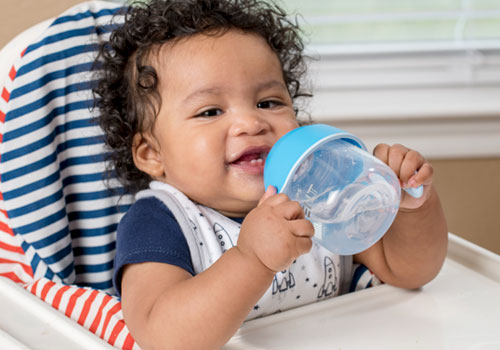
Nearing the Finish Line (12 to 15 months)
At this point, your child is probably comfortable with using a cup. Since she’s mostly getting her nutrient needs from food, giving up the bottle is right around the corner.
Point out when other people use a cup and give your child lots of praise when she drinks from a cup. If your child asks for the bottle before a nap, at bedtime or when she is upset, help her find other ways to calm herself. Give her extra snuggles or a special stuffed animal. Consider making a new bedtime routine that doesn’t involve the bottle – like reading a book or singing a special lullaby. Be patient – it takes time.
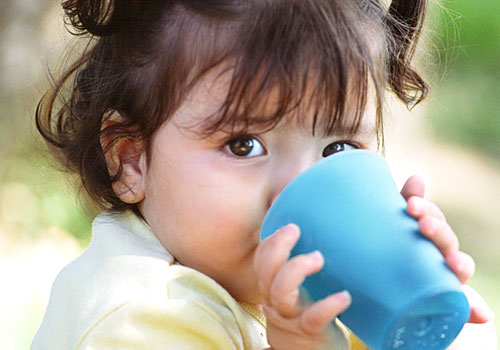
It's Never Too Late (15+ months)
By 15 months, your child should be confidently drinking from a cup only. But some children struggle more to get off the bottle or life events or illness may get in the way.
Here are some tips moms have shared with us that helped their older children say bye-bye to bottles.
Dilute
Dilute bottles of milk with water. Start with half water and half milk and gradually over time, add more water until only water is left in the bottle. Continue offering milk in the cup and remind your child how yummy the milk tastes in the cup.
Talk
Point out others who are drinking from a cup. Describe what you see. “Look how your brother is drinking his milk from a blue cup. He tilts it back and takes a big sip. You can do that, too!”
Celebrate
Praise your child whenever she drinks from a cup. Make drinking from a cup fun and celebrate it together.
Just Don’t Give It
Though it’s easier said than done, don’t give your toddler a bottle, even if she cries for it. Show her that you’re getting rid of them by recycling, donating or storing them. This will keep bottles out of sight and out of mind.
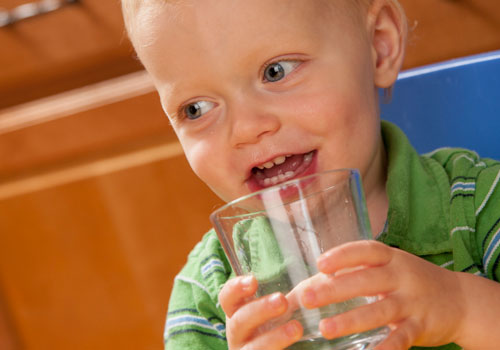

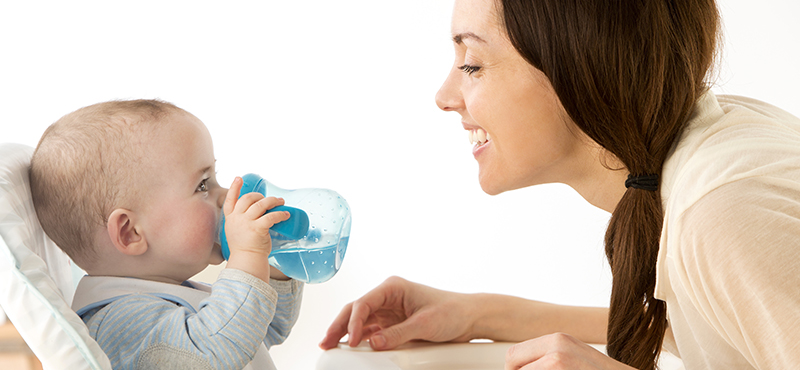

 Have any questions?
Have any questions?
